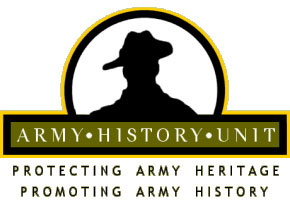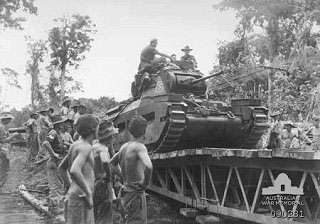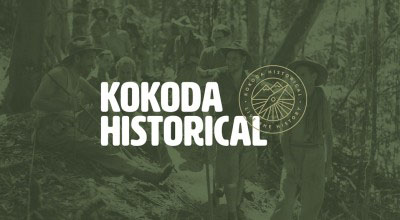This directory page is intended to assist you in finding organisations involved in military history and heritage in Victoria.
Please make contact with the organisations directly.
Patron: Major General K. G. Cooke AO RFD ED
Vice Patron: Brigadier W. J. Hocking RFD ED
President: Lieutenant Colonel Don Blanksby RFD ED
Vice President: Major Bob Prewett RFD
Secretary/Treasurer: Lieutenant Colonel Ev Reynolds RFD ED
Including: 1st Battallion Royal Victorian Regiment
Associate Chaplain: Mr David Hall
Annual Membership Subscription $25 due 1st July each year
Life membership $125
Newsletters posted during the year will keep you informed of important events related to our association and our reserve forces.
Each year members are invited to attend the annual dinner/lunch. (ladies and family members welcome)
Welfare advice available, pensions, illness, bereavement and other entitlements related to your previous service with the armed forces.
The 58th Infantry Battalion, known as the Essendon rifles was formed in 1913, as a citizen’s military force under the command of Harold “Pompey” Elliot.
Air Force Association Victoria or more formally, the Royal Australian Air Force Association (Victorian Division)
To recognise the unique service of ex and serving members of the Royal Australian Air Force and to acknowledge the commitment and sacrifices they made in the service of their country.
To foster friendships, support commemorative activities, heritage and records of history and provide for the welfare of members and serving and ex serving members of the RAAF through advice, liaison and representation.
State President:
J. (John) McCrystal
office@raafavic.gov.au
Office Manager:
B. (Barbara) Stallard
office@raafavic.org.au
RAAF Association (Victorian Division)
Air Forces Centre
24-36 Camberwell Road
EAST HAWTHORN VIC 3123
RAAF Association (Victorian Division)
P O Box 1038
HAWTHORN BC VIC 3122
Phone No: (03) 9813 4600
Fax No: (03) 9813 4966
Email Address: raafavic@raafavic.org.au
Antique & Historical Arms Collectors Guild of Victoria Inc. caring for Victoria’s heritage for tomorrow.
Founded in 1963, the Guild is dedicated to the collection, preservation, research and interpretation of antique and historically significant arms, accoutrements and ephemera.
When the Guild was established in 1963 it provided the small group of private collectors in Victoria, indeed Australia at that time, with a means of sharing new finds, researching their collections, and generally enjoying their pursuit. It also offered a political voice to the issue of adequate heritage protection being offered to antique arms, in a decade which saw much of Melbourne’s heritage architecture under threat from destruction.
Today, the essential aims of the Guild remain the same – to provide a network for fellow collectors to share and enjoy their pursuit, and to advocate and lobby for recognition of the important heritage status afforded to the items in private ownership.
The private collector has an important in continuing to preserve our cultural heritage for the benefit of future generations.
Anyone with an interest in heritage arms is welcome to join The Guild, irrespective of whether they intend to collect or not. The Guild’s membership represents the largest single body of knowledge on this subject in Victoria, and its members include both enthusiasts as well as professionals employed within the field of heritage arms and the museum sector.
Where to meet us, and how to join
The Guild holds monthly meetings on the last Monday of the month at Eley Park Community Centre, 87 Eley Road, Blackburn South, Melbourne (Melways ref: 61-H5). We warmly welcome, and encourage, all prospective members to come along to one of these meetings.
If planning to attend, let us known by email beforehand, and we will ensure a member of the Guild committee is on hand to meet you, and answer any queries you might have about the organisation.
The Museum exists to preserve, exhibit and interpret armoured vehicles, artefacts, icons and memorabilia in order to promote and commemorate Australia’s Light Horse and Armoured heritage…
MHHV Foundation Member
The museum now has more than 70 Armoured Fighting Vehicles on display in Hopkins Barracks, the home of Australian Armour at Puckapunyal, Victoria. Covering an area of over 4000 square metres the museum is one of the largest armour museums in the Southern hemisphere.
Army History Unit is a direct command unit of Army Headquarters (AHQ), under the control, for administration purposes, of the Chief of Staff AHQ. As a sub unit of the Army History Unit, we have more than just vehicles on display; we have two unique halls devoted to the history, people and technology associated with the Light Horse and the modern armoured corps.
Australia’s cavalry and armoured forces have fought in all the key conflicts of the 20th century including the Boer War, World War 1, World War 2, Vietnam, and peacekeeping missions in Somalia and Rwanda. The museum has recently been involved in documenting the RAAC’s involvement in East Timor. The Museum continuously develops its exhibits, facilities and collection in order to be the principal establishment in Australia for the preservation and presentation of the nation’s Light Horse and armoured heritage.
The Museum is:
- The premier collection of Australian Light Horse and Armoured Heritage
- An excellent training facility for the Australian Army and the RAAC
- Widely regarded as a world-class military museum
To foster and perpetuate ties of comradeship amongst past and serving members of Commando and Special Force units and like minded associations.
Patron: General Sir Phillip Bennett AC. KBE. DSO.
The ACAVic Inc. is the trustee for the W528 Welfare Fund, providing assistance to past and present Commandos in need.
Contact the committee for additional information.
Secretary, Glenn MacDonald via email TheSecretary@AustCdoAssocVic.com
Restoring Australia's only surviving B-24 Liberator
Ballarat Ranger Military Museum
Location: Rear of Ranger Barracks, 1812 Sturt Street (Corner of Ring Road), Ballarat, Victoria, Australia
Patron: Her Excellency the Honourable Margaret Beazley AC QC, Governor of New South Wales
The Battle of Crete & Greece Commemorative Council was formed in October 2015 in Melbourne and is an initiative of the indefatigable leadership of the Cretan Community of Victoria.
The Council has been established to ( a ) promote and commemorate the involvement of Anzac Forces in the Greek Campaign and the Battle of Crete in 1941, ( b ) to promote and commemorate the involvement of the Greek Army and Greek civilians in the campaigns that have forever created a bond between Australia and Greece, ( c ) re-enforce the historical connection between Australia and Greece, whether through military operations or migration, ( d ) Encourage pilgrimages and tourism between Australia and Greece to further deepen the appreciation of this connection, to enhance economic development and provision of associated infrastructure including memorials and finally ( e ) to reach out and seek the involvement of our ANZACS descendants and Families including children and grandchildren.
The Council aims to achieve this through engaging with Federal, State and Local Governments, the Department of Veterans Affairs, the Ministry for Defence in Greece and Australia, seeking the support of the Allied Consular Offices, the participation of the Australian Unit Associations, Regiments and Battalions, the private sector and communities in Australia, New Zealand and Greece and especially at the local level in Crete, and other significant Anzac sites in Greece.
Its purpose is to commemorate the Anniversary of the Battle of Crete in Australia in such a way that will preserve and promote the shared history and the links of Australia, New Zealand, Britain and Greece, raise awareness of the importance of the Battle of Crete and Greek Campaigns and to remember and honor the fallen and the remaining veterans and in particular to our younger Generations and our Students.
Some of the events the Council has planned, include a photographic Exhibitions, Lectures, Seminars, Forums, Commemorative Services, Wreath Laying Ceremonies, Parades, Movie Nights, Olive Tree Plantations, Community Sporting Events, School Tours, Memorial Tours, Study Guides, Flag Ceremonies, Book Launches, Luncheons, Dinner Dances, Memorial Unveilings on the Australian involvement in 2nd World War and in particular the Battle of Crete.
FOCUS :
• On building awareness of the Battle of Crete and Greek Campaign in the build-up, during and post the 75th Anniversary year in 2016
• Maximise mainstream turnout at the Battle of Crete Commemorative events at the Shrine of Remembrance and Australian Hellenic Memorial
• Support the Cretan Community in their Annual Battle of Crete Commemorations and encourage other Greek Community organisations that have a significant ANZAC heritage to commemorate their history.
• Private James Zampelis is the only Hellenic Anzac to die in the Battle of Greece and Crete. Consideration may be given to produce and install a small bronze plaque at the village Mournes where he was killed.
• To approach other community groups to be involved in the Annual Program that have an ANZAC connection.
• To engage political and community pressure to the Australian Government to recognize the Battles of Greece and Crete by awarding a specific Medal.
Facebook : Anzacs in Crete – 1941
Postal : P. O. Box 450 Preston VIC 3072
Interested in Aviation? Want to join an enthusiastic group at Benalla? Try Benalla Aviation Museum come to the airport on Sundays or Wednesday and see what we do.
We are looking for any members of No: 11 Elementary Flying Training School who trained or instructed at R.A.A.F. Benalla – or any W.A.A.F’s or support crew Our Museum is open on Sundays 10 till about 3 and on Wednesday our volunteers attend at the museum for working bees We have a Tiger Moth that we are restoring to display, but we are looking for ex 11 EFTS people to write up a history – Please contact us
The museum is open on Wednesdays and Sundays from 9.00am to 3.00pm. Other inspection times can be arranged for groups by phoning 0429 629 415.
Benalla Aviation Museum Committee
PO Box 633
Benalla, Victoria 3671
President: – Craig Morrison
Vice President: – Mick Carr
Secretary: John Currie
Treasurer: Richard Morton
The Bendigo Military Museum (BMM) is fully supported by the Bendigo District RSL Sub-Branch which utilises the Soldier’s Memorial Institute building. This iconic City of Greater Bendigo building is a significant landmark both for the residents of the region and for visitors. The BMM was redeveloped and officially re-opened on November 15th 2018, exactly 97 years after the initial opening of the building in 1921.
It is one of the largest Memorial Museums in the country and is home to a broad range of military memorabilia that showcases the contributions of our local heroes in various conflicts and peacekeeping operations.
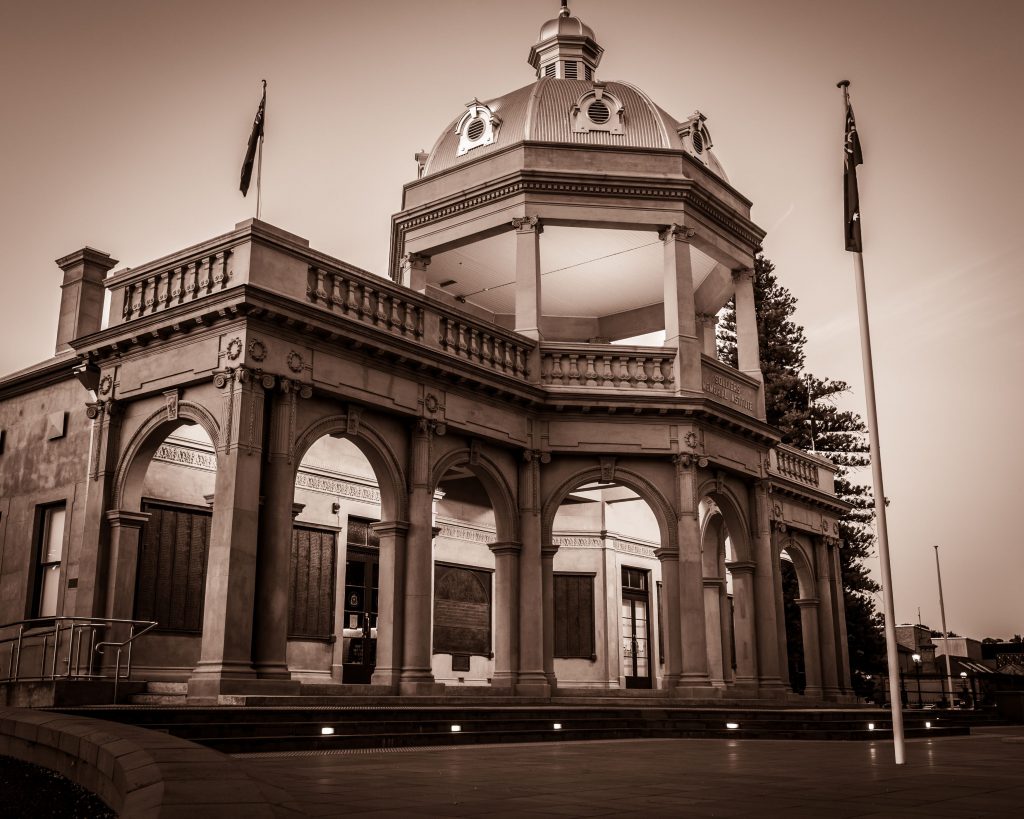
The museum is home to a broad range of wartime memorabilia that has either been donated or loaned by individuals and organisations.
Wednesday: 11:00 am – 3:00 pm
Saturday: 11:00 am – 3:00 pm
Sunday: 11:00 am – 3:00 pm
The Museum welcomes large group bookings by appointment.

There are currently over 30,000 Australian Defence Force members still missing from both wars. Fallen Diggers is working together with other interested parties, researching war records, diaries and military documentation in our attempt to learn more about trench systems around battlefields and to gain an understanding on the day to day ordeals that our brave soldiers experienced.
Fallen Diggers Incorporated are currently researching the experiences of over 800 soldiers that are missing to date in the fields of northern France. Our main project is currently examining the trench systems centred around the Battle of Pozières, 23rd July to 5th September 1916. Additionally, we are also researching the Battle of Broodseinde Ridge 1917 and two missing flight crew from WW2 (more details will be released in the near future).
Fort Queenscliff in Victoria, Australia dates from 1860 when an open battery was constructed on Shortland’s Bluff to defend the entrance to Port Phillip Bay.
MHHV Foundation Member
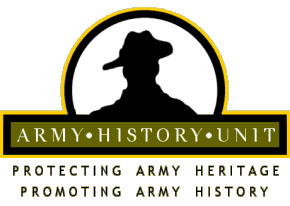
The Fort, which underwent major redevelopment in the late 1870s and 1880s became the headquarters for an extensive chain of forts around Port Phillip Heads.
Its garrison included volunteer artillery, engineers, infantry and naval militia and it was manned as a coastal defence installation continuously from 1883 to 1946. The other fortifications and armaments around the Heads were completed by 1891. This made Port Phillip one of the most heavily defended harbours in the British Empire.
It is claimed that the first British Empire artillery shots of World War I were fired when a gun at Fort Nepean fired across the bow of the German freighter Pfalz, as she was attempting to escape to sea. The orders to fire came from Fort Queenscliff. It is alleged that the same gun, with a different barrel, also fired the first Australian artillery shot of World War II.
By 1946 coastal artillery was outmoded and the Forst became home of Army’s Staff College.
After the three Service Staff Colleges were combined in Canberra, it became the base for Army’s Soldier Career Management Agency in 2001.
With over 150 years of Australia’s heritage on display, For Queenscliff is one of Victoria’s most important historic sites and one of the largest and best preserved forts in the country.
Enjoy the rare opportunity to tour a 19th century Coastal Artillery Fort which is an operating Australian Army base.
Amongst the fascinating artefacts and historical objects is the opportunity to try on uniforms from different moments in time.
The GMRG comprises a group of enthusiasts dedicated to educating and entertaining the Australian public about the proud and distinguished military history of Australia, incorporating our Allies and our enemies.
History Guild is a group of History Enthusiasts.
Our mission is historical literacy for all. To be able to make decisions about the future it is imperative that we understand the past. We are passionate about history and want it to be more widely known and understood. History Guild creates articles, podcasts and videos that tell the stories of history in interesting and engaging ways. We have a strong focus on Australian military history.
The HMAS Castlemaine is one of the 60 Australian-built Bathurst class corvettes to serve throughout World War Two and the last such vessel still afloat, having been restored by volunteers over three decades.
HMAS Castlemaine, berthed at Williamstown and open for public inspection allows visitors to explore an original World War 2 warship. She is one of the 60 Australian-built Bathurst class corvettes to serve throughout World War Two and the last such vessel still afloat, having been restored by volunteers over three decades. Castlemaineis open to the public on weekends and public holidays.
The Bathurst class corvettes were designed in Australia, based on the British Bangor class corvette and modified for local conditions. They were built primarily as mine sweepers, also capable of armed escorts, landing and embarking troops and supplies ashore, and, when the scourge of enemy submarines was realised, anti-submarine warfare. To this end, HMAS Castlemaine was an economical ship which could operate in both open and shallow coastal waters and was armed with proven and reliable anti-aircraft guns, depth charge launchers and the QF 4 inch deck gun which fired a range of specialised ammunition. The class was officially designated ‘Australian Mine Sweeper’.
Her small crew, initially of 70 was expanded to nearly 100 owing to the equipment added to the corvettes during the war such as radar and ASDIC, an early form of sonar.
It is fitting that she is berthed in perpetuity at Williamstown, where she was built and subsequently launched on the 7th of August 1941 by Mrs. R. G. Menzies, wife of the then Prime Minister and that her engines were built, in the town for which she is named- Castlemaine, located some 140km north west of Melbourne. Throughout her service career she suffered minor damage to enemy actions, was involved in a collision with a ferry in Manly, Sydney, ran aground near Millingimbi off the coast of Arnhem Land and was involved in the same action in which HMAS Armidale, one of her sister ships was sunk off the coast of Timor.
Today visitors can see how crews lived and worked during the war years, witness the original engines turning over and view a wide range of artefacts documenting Australian maritime history.
HMAS Castlemaine, open from 10AM every weekend, is located on Gem Pier in Williamstown.
Gates close to visitors at 4pm.
Admission Prices – Adults: $6, Children Under 16: $3, Families: $15, children under 4: free
Kokoda Historical provides the trekker with the complete living history experience. We focus not only on the adventure of walking the Kokoda Track, but also on experiencing the history first hand.
MHHV Foundation Member
The adventure of walking the Kokoda Track is guaranteed to be one of the most challenging and rewarding experiences of your life. Set high amidst the beautiful mountains of the Owen Stanley’s, you will explore one of the last untouched wildernesses left in the world. As the Kokoda Historical group treks through vast rainforest, makes numerous river crossings and battles its way across rugged terrain, we will recall how young, ill-trained and ill-equipped militiamen began the fight to save Australia. What better way of paying homage to the men who fought to save Australia, by learning the history while walking in their footsteps.
Starting off either in the village of Kokoda or Ower’s Corner we will make the 96km journey across the rugged terrain of the Kokoda Track, the highlights being: Kokoda, Isurava, Templeton’s Crossing, Lake Myola and Brigade Hill. Kokoda Historical also offers trips to the Northern Beachheads taking in Popondetta, Gona, Sanananda and Buna.
Our pricing is very competitive and safety is our number one priority. Kokoda Historical combines the knowledge of locals and that of Australian historians. Our emphasis is on small groups and the historical significance of the Kokoda Track and the Kokoda campaign.
Melbourne University Rifles Association (MURA) is open to past members of the Melbourne University Regiment and friends of the Association. Membership is open to past Reserve and Regular members of the Regiment and their friends.
MURA conducts a number of activities throughout the year to encourage members to catchup with mates and enjoy a spirit of friendship and camaraderie. Activities include a formal dinner, luncheons and informal sporting activities.
The Victorian Branch of the Military Historical Society of Australia was established in 1957.
The branch membership comprises former servicemen and women, military history researchers, collectors of militaria and those who simply enjoy understanding more about Australia’s military heritage, family experiences and history.
Australian Military History Research and Publications
Established in Melbourne in 1991 Mostly Unsung provides a unique research facility into Australian military history from the First Fleet to the present day. Headed by Lieutenant Colonel Neil C Smith, AM, Mostly Unsung specialises in genealogical and service aspects of former Australian and British Defence personnel…
MHHV Foundation Member
With over 24 years Australian Regular Army experience, Neil Smith understands military jargon, abbreviations and the various organisational and recording systems employed by the Army, Navy and Air Force. He has accrued a wide and useful experience in examining publicly available records so as to optimise the value of both personal and service details pertinent to individual and groups of Australian servicemen and women. Neil was nominated for the Melbourne Shrine of Remembrance Medal in 2010 and is well known for his pre-recorded ANZAC Day historical pieces and parade commentary in Victoria on ABC TV…
In addition to client initiated research tasks, Mostly Unsung also researches and publishes on a range of Australian and British military history subjects. Examples include regimental histories, tracking unit movements, medal rolls such as those for the Boer War, Crimea, Indian Mutiny, New Zealand Wars, Afghanistan 1878 and many more; Escapees From Singapore in 1942, Prisoners of War, Australians with Irregular units in the Boer War, Australians serving with Allied nations and the North Russian Relief Force, British Commonwealth Occupation Force (Japan) Army nominal roll, World War Two Army and RAAF unit movements, facilities, aliases, municipal honour rolls and unit nominal rolls.
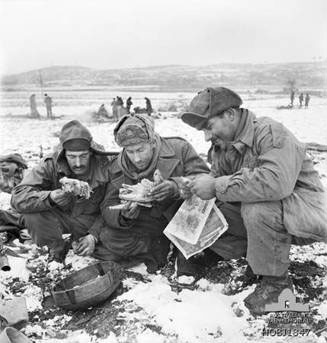
The Museum of HMAS Cerberus is located in a heritage listed building (originally the Supply School built in 1922) within the HMAS Cerberus heritage precinct. The Museum exhibits some of the oldest and most significant artefacts held by the Naval Heritage Collection most of which relate to the Victorian Colonial Navy and the history of HMAS Cerberus.
MHHV Foundation Member
The Flinders Naval Depot was established on the 1st September 1920 and commissioned HMAS Cerberus 1st April 1921. Located on 4000 acres at the head of Hanns Inlet, HMAS Cerberus is regarded as the premier training establishment for the Royal Australian Navy. The present Museum of HMAS Cerberus was first established by Commander L G Wilson MBE RAN in the early 1980s. The building was built in 1925 as the New Entry’s study block, in 1930 when the Royal Australian Naval College was relocated from Jervis Bay the building then became the Cadets’ Academic block. During WWII the facility was used as the Drafting Office and then later as the Supply School. Recently upgraded, the Museum now contains a section looking at the RAN’s role in the Vietnam War.
All visitors must pre-book and have photo ID.
Museums Victoria is supported by the Victorian Government through Creative Victoria Creative Victoria
The National Boer War Memorial Association Inc was formed in 2007 under the leadership of Colonel John Haynes OAM (Ret'd) with the aim of constructing a memorial to commemorate the sacrifice of Australian Soldiers during the Second Anglo-Boer War in South Africa 1899-1902. This task was complete when the $4,000,000 memorial was opened by His Excellency the Governor General in May 2017. The national association in accord with its constitution was wound-up in 2018.
In the course of the project the national association was supported by state and territory associations. Some of those associations have chosen to continue the work of commemorating those who served in Australia's first war. This includes Boer War Day commemorations, research and publication of items on the war etc. Contact details for the committees can be found below:
The NMBVAA Inc was established in Australia in June 1995.
There are well established Branches and sub-Branches in all States and Territories holding regular meetings, socials, and Remembrance Services.
Membership is open to all Australian and Allied ex Armed Forces personnel who served in the prescribed areas of Malaya, Malaysia, Sabah, Sarawak, the ThaiMalay Border, Brunei, Ubon, and Singapore during WW2, 1948 – 1960 The Malayan Emergency, 1962 – 1966 The Indonesian Confrontation, and post 1966 on the Peninsular and East Timor.
Widows, widowers, family and friends are very welcome.
There is an annual service held in Malaysia at Batu Gajah, Syed Putra and now Taiping where we rediscovered grave sites of some Australian and Allied servicemen who were KIA, DOW and DOI during the Malayan Emergency. There are also some Australian dependents buried there.
Association Aims
COMRADESHIP for those who served in Malaysia, Sabah, Sarawak, Singapore, Ubon, the Thai-Malay Border, Brunei and Timor during WW2, the MALAYAN EMERGENCY and the INDONESIAN CONFRONTATION post WW2.
To ASSIST members in times of need.
To REMEMBER with Pride, Respect and Gratitude, those who made the Supreme Sacrifice in the line of duty and to ensure those who fell are represented on ANZAC Day in Australia and Remembrance Day abroad.
To PROMOTE the Association and it’s Aims.
To STRENGTHEN TIES with Malaysia and Singapore.
To Hold an Annual Reunion.
The National Vietnam Veterans Museum (NVVM) is a unique Museum. Originally founded by Vietnam veterans to help and support veterans to cope better with their experiences during the Vietnam War (1962-1975) and after their return to Australia, the NVVM seeks to remember, interpret and understand the experience of the veterans of the Vietnam era and the enduring impact of the war on society.
Now in its 15th year as a military collection and its second year as an independent museum, the NVVM has been accepted into the Museums Accreditation Program (MAP) and is focused on accreditation by the end of 2016 or before.
The NVVM provides a unique and authentic experience for any visitor, young and old, with new galleries and exhibits, along with a huge range of memorabilia and artefacts large and small.
MHHV Foundation Member
The Museum presents the story of Australia’s military involvement at a time of deep division among the Australian population over conscription. The Museum is of great historical and cultural significance for Australians of all ages and also provides a nostalgic meeting place for Veterans and their families.
Located on Phillip Island, Victoria, Australia – a popular tourist location – the Museum was officially opened on the 9th March 2007. From its initial concept – a Land rover and trailer touring Australia – equipment, photos and stories were donated and added to the collection…
It was important in planning that the museum reflects a focus of unity for the Vietnam veteran community. We are delighted that this has been achieved. There are many veterans who have stated, either personally or in covering letters, that they are not affiliated with any club or organization. It is important that the National Vietnam Veterans Museum is accepted as belonging to all Vietnam Veterans; there are no second-class citizens in our community.
It is handy to be able to find literature that expresses the Museum’s purpose accurately. In its Code of Ethics (2004), The International Council of Museums describes a museum as:
“A non-profit making, permanent institution, in the service of society and of its development which is open to the public, acquires, conserves, researches, communicates and exhibits, for purposes of study, education and enjoyment, the tangible and intangible evidence of people and their environment.”
This is exactly what the Museum stands for. With veteran and public support, this important National Museum will continue to progressively move forward and we hope, that you as veterans, your families and visiting members of the public, will be proud of it and a part of its future.
The Navy has had a long association with the Port Melbourne precinct, dating back to the Colonial Navy days of the mid 1850’s to 1992.
MHHV Foundation Member
The Colonial Navy trained in the old Customs Shed at the end of Town Pier, itself demolished in 1950. The Naval heritage Foundation was incorporated on January 22nd 2008 with this statement of purposes;
1. To commission artists to create a statue to commemorate and symbolise all naval servicemen and servicewomen, initially in Victoria, and then in other States and Territories.
2. To reclaim, restore and maintain buildings of naval heritage significance.
3. To erect, maintain and manage existing and future naval heritage projects.
4. To develop a web site to commemorate all naval servicemen and servicewomen.
5. To raise funds, principally from the corporate sector in any manner which the Committee deems fit to finance the aforementioned activities.
Anyone in WWII who joined the RAN for the ‘Hostilities and 6 months’ in Victoria would have passed through HMAS Lonsdale, and they carried the prefix PM in front of their Official Number which signified Port Melbourne and denoted where they joined the Navy. Thousands would have borne the PM prefix. Thus throughout their Naval time their Official number reflected where they had joined the Navy to go to war at sea. HMAS Lonsdale was decommissioned and demolished in 1992.
With the closure of Lonsdale the association with the Navy and Port Melbourne which had spanned from the mid 1850’s to 1992 sadly came to an end. The Commonwealth Government also gave the Bay Street Drill Hall to Government of Victoria. CIRCUS OZ occupies it today.
There is not a single Heritage Marker to denote the Navy was ever in this area, and some 15,000 Naval Men and Women would have passed this way.
The Naval Heritage Foundation of Australia Inc. was incorporated to remedy this omission, and plans to erect a 7 foot six inch bronze statue of a WW2 Sailor. He will represent all ranks and rates, men and women who have served their country in both war and peace, and passed this way.
Membership of the NHSA automatically entitles you to be part of the Victoria Chapter and to share in its activities.
PRESIDENT
Federal Vice President & President of Vic-Tas Div
LCDR Roger Blythman LLB RFD* RAN (Ret’d)
HON VICE PRESIDENT
Mr Frank McCarthy
SENIOR VICE PRESIDENT
CMDR Graeme Furlonger RAN
VICE PRESIDENT
Mr Ray Gill JP LM
PAST PRESIDENTS
IPP LCDR John Redman RAN
PP CMDR John M Wilkins OAM RFD* LM
PP CMDR Neil Meaden RFD
PP LCDR John Bird RNR LM
PP CMDR Graham Harris LLB RFD** RAN Ret’d
NAVAL HISTORIAN
CMDR John M Wilkins OAM RFD* LM
HON SECRETARY
Ms Lynda Gilbert
Email: nlavictasdiv@gmail.com
HON TREASURER
Mr Ray Gill JP LM
NEWSLETTER, FACEBOOK, WEB EDITOR
Ms Lynda Gilbert & Mr Ken Crook
EVENT COORDINATOR
Ms Jane Teasdale
SHIPS’ VISITS/YACHT CLUBS’ COORDINATOR
CMDR Graeme Furlonger RAN
SHRINE OF REMEMBRANCE LIAISON
Mr Ken Crook
GRAPHIC DESIGNER
Mr Allan Paull OAM
MARKETING COORDINATOR
Mr Ron Lyon
LIAISON OFFICER
Mr John Harker
The Nhill Aviation Heritage Centre (NAHC) was established to capture Nhill's proud aviation history, spanning more than 100 years. In particular, it's a tribute to more than 10,000 young men and women who trained at the Nhill RAAF Base during World War II.
It's currently home to five aircraft. This includes an Avro Anson (which is almost completely rebuilt), a fully rebuilt Wirraway, an airworthy Tiger Moth, a deSoutter, and an operating Link Trainer (flight simulator). Come and see our collection.
We are open on Saturdays and Sundays from 10am-4pm, as well as public holidays, and we have free RV camping available. We're excited to welcome you to Nhill.
The Northern Victorian Arms collectors Guild is based in Shepparton.
It focuses on the collection and preservation of firearms modern and antique, collectables, medals, books, and militaria of all kinds.
Like the Antique Gun Collectors Guild of Victoria, the Northern Victorian Guild is dedicated to the collection, preservation, research and interpretation of antique and historically significant arms, accoutrements and ephemera. Annually, the Northern Victorian Guild conducts its Shepparton Gun Show, Collectables and Militaria Expo.
The Northern Victorian Guild meets in Shepparton at the Sporting Shooters association Australia, (“Shepparton Branch”) clubrooms, 1175 Midland Highway, Shepparton East, on the second Friday of each month, year around, with meetings beginning at 7.30 pm.
If you have an organisation or group you think should be included here please email info@mhhv.org.au with the details.
